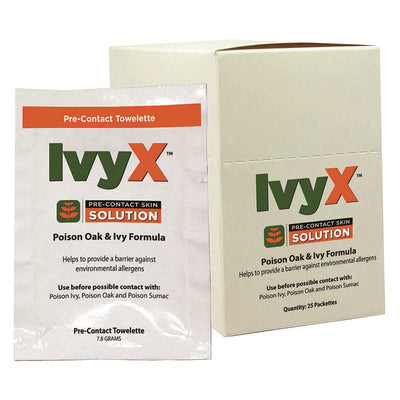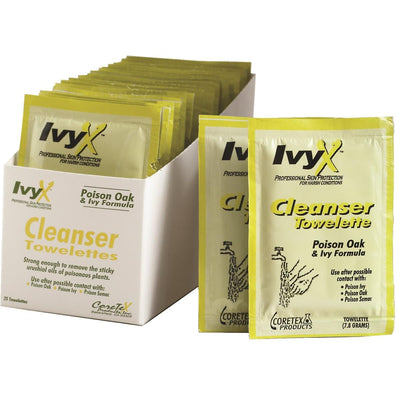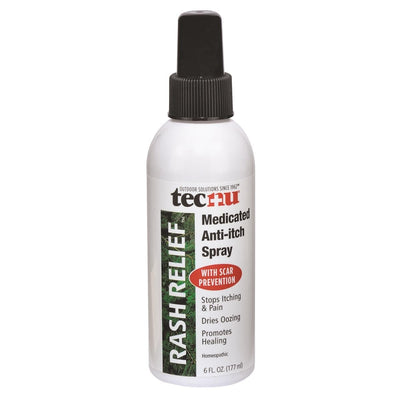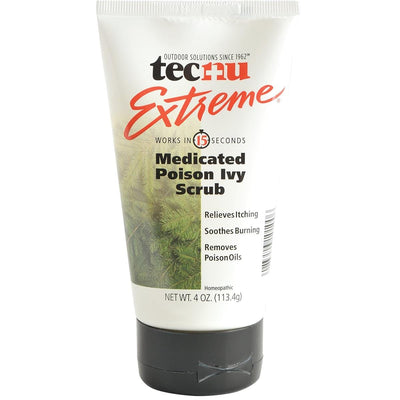Protection from Poison Ivy, Oak, and Sumac
Here are some key points.
- Poison ivy, poison oak, and poison sumac are common causes of allergic reaction.
- The best way to avoid contact is by knowing what the plants look like and avoiding them.
- If contact occurs, immediately washing the exposed area with soap and water is important.
What do the plants look like?
- Poison Ivy
- Poison ivy has 3 pointed-tip leaves per cluster.
- It usually grows east of the Rocky Mountains.
- The ivy grows as a vine in the East, Midwest, and South. In the far Northern and Western United States, Canada, and around the Great Lakes, it grows as a shrub.
- Poison Oak
- Poison oak has 3 rounded-tip leaves per cluster.
- It usually grows in the Western United States, Canada, and Southeastern states.
- In the West, this plant may grow as a vine but usually is a shrub. In the East, it grows as a shrub.
- Poison Sumac
- Poison sumac has 7 to 13 narrow pointed-tip leaves on a branch.
- It usually grows in the Eastern states and Southern Canada.
- Sumac grows in standing water in peat bogs in the Northeast and Midwest and in swampy areas in parts of the Southeast.
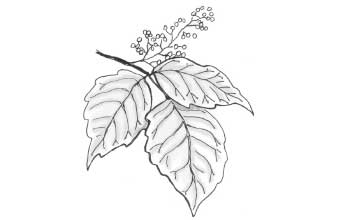
Poison ivy has 3 pointed-tip leaves per cluster.
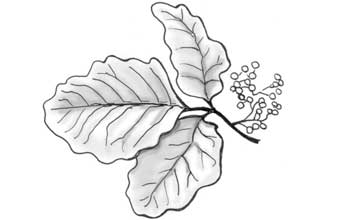
Poison oak has 3 rounded-tip leaves per cluster.
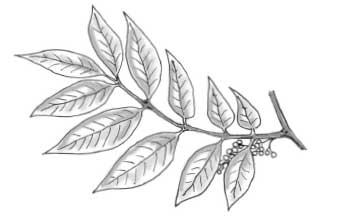
Poison sumac has 7 to 13 narrow pointed-tip leaves on a branch.
How do you get exposed?
- Contact with an oil found in the sap of poisonous plants can cause a rash and blistering.
- The oil stays active for up to five years on any surface, including dead plants, tools and unwashed clothing.
- It is a colorless or pale yellow oil that oozes from the plant. This includes the roots, stems, and leaves.
Contact with the poisonous oil can occur by:
- Direct contact by touching the sap of the toxic plant.
- Indirect contact by touching something on which the oil is present. The oil can stick to the fur of animals, to garden tools, clothing, or any objects that have come into contact with it.
- Airborne contact or inhalation of poisonous plants oils are possible when the plants are burned.
What happens if you are exposed to the oil?
- When the oil gets on your skin, it begins to penetrate in minutes.
- Usually, a reaction appears within 12 to 48 hours.
- There is severe itching, redness and swelling, followed by blisters.
- In a few days, the blisters become crusted and may take 10 days or longer to heal.
How do you prevent contact?
- Actively look for the plants and stay away from them.
- When practical, wear long pants, long sleeves, boots, and gloves.
- Do not burn plants that look similar to poison ivy, poison oak, or poison sumac.
What do you do if you accidentally touch the plants?
- Wash all exposed areas with cool or lukewarm water and soap or a product made for treating poisonous plants.
- Wash your clothing separate from other clothes. Then run a second cycle through with just soap and water.
- Relieve itching by taking cold showers or using a lotion made for treating poisonous plants, which soothes the blisters.
- Soaking in a bath tub with oatmeal or baking soda may help as well.
- Contact a doctor if extreme discomfort occurs or if the oil is inhaled because the plants were burned.
Poisonous Plants Do’s and Don’ts
Do
- Know how to identify poisonous plants.
- Notify your supervisor if a poisonous plant is found in a work area.
- Wash your hands if you touch these plants.
- Touch these poisonous plants.
- Burn areas where poisonous plants are present.
- Scratch a poison ivy, poison oak, or poison sumac rash.
Poisonous Plant Relief
When you’re ready to work safely, you’re ready to work. See our full line of safety supplies, including respirators, eye and ear protection, coveralls, first aid and more.






